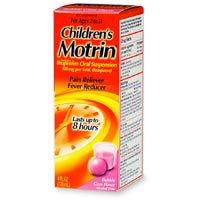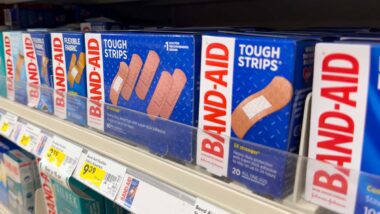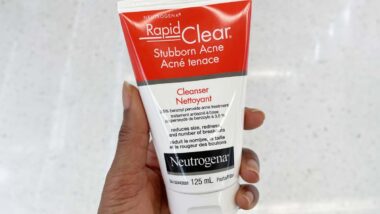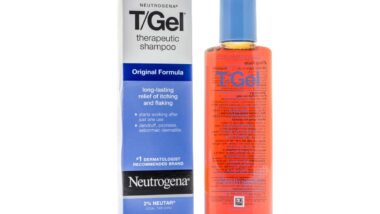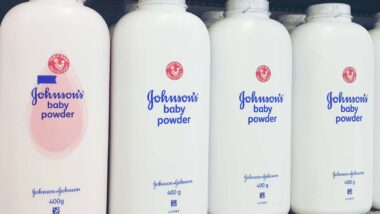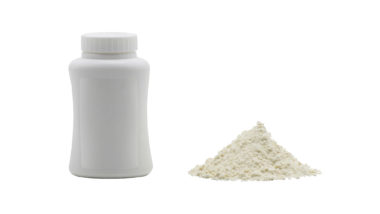Top Class Actions’s website and social media posts use affiliate links. If you make a purchase using such links, we may receive a commission, but it will not result in any additional charges to you. Please review our Affiliate Link Disclosure for more information.
The Supreme Court has denied Johnson & Johnson’s application to hear arguments to appeal the $140 million verdict in a Stevens Johnson Syndrome lawsuit related to its Children’s Motrin medication.
Johnson & Johnson was found by a lower court to have failed to adequately warn patients about the risk of SJS, a potentially fatal and life-altering allergy to the medication.
The $140 million award was issued by a Massachusetts jury in an SJS lawsuit filed by plaintiff Samantha R. and her parents in 2007.
Johnson & Johnson and its McNeil-PPC Inc. subsidiary asked the Supreme Court to decide whether they should be held liable because they claim federal drug regulators would not have approved adding warnings to the drug’s labels about the life-threatening conditions, Stevens Johnson Syndrome (SJS) and Toxic Epidermal Necrolysis (TEN), Reuters reports.
In refusing to hear the appeal, the high court left intact one of the largest verdicts ever awarded by a Massachusetts jury.
Stevens Johnson Syndrome & Children’s Motrin
Samantha and her parents filed the SJS lawsuit against Johnson & Johnson after the Children’s Motrin product caused Samantha to develop Toxic Epidermal Necrolysis (TEN), a more severe form of SJS in 2003, when she was just seven years old.
Samantha’s parents argued that the Children’s Motrin medication should have come with warnings that specifically mentioned TEN, the related skin condition Stevens Johnson Syndrome, and a general warning that rashes or blisters that develop after taking the drug could lead to a “life-threatening” condition. However, the FDA had rejected warnings similar to those urged by Samantha’s parents.
Stevens Johnson Syndrome, a form of Toxic Epidermal Necrolysis, is a life-threatening skin condition in which cell death causes the epidermis to separate from the dermis. SJS is thought to be a hypersensitivity complex that affects the skin and the mucous membranes. The most well-known triggers are certain medications, but it can also be due to infections, or more rarely, cancers.
Toxic Epidermal Necrolysis and Stevens Johnson syndrome essentially cause one’s skin to melt off the body and patients are often treated in hospital burn units.
Samantha developed the condition when she was incorrectly diagnosed with measles and given additional doses of Children’s Motrin, until she was rushed to the hospital and diagnosed with TEN. She was put into a month-long coma, suffered heart and liver failure and experienced a stroke. She is now legally blind, despite undergoing 12 eye surgeries.
Samantha and her family filed an SJS lawsuit against Johnson & Johnson alleging among other things that the drug company was negligent in failing to adequately warn about the risks associated with its medication. A jury ruled in the Samantha’s favor, awarding $50 million to Samantha and $6.5 million separately to each parent.
The award was appealed, with Johnson & Johnson arguing that the FDA would not have approved additional warnings about the risk of Stevens Johnson Syndrome. The Massachusetts Supreme Judicial Court upheld the lower court’s ruling, finding that just because the FDA overruled such a warning in the past did not mean it would reject specific warning changes from Johnson & Johnson.
The defendants then appealed the ruling to the Supreme Court, who ultimately refused to hear the appeal.
SJS Lawsuits
Pharmaceutical manufacturers are aware of the risks associated with their drugs, yet many feel proper warnings are for the most part inadequate on drug labels. Many over-the-counter (OTC) drugs such as ibuprofen — found in Children’s Motrin — have been linked to Stevens Johnson Syndrome.
Other lawsuits filed against drug companies whose medications were linked to SJS and TEN have also resulted in awards for the plaintiffs. Those lawsuits also alleged the drug companies failed to adequately warn about the risks of the conditions, delaying patients from receiving proper medical treatment for the potentially fatal allergic reactions.
Do YOU have a legal claim? Fill out the form on this page now for a free, immediate, and confidential case evaluation. The Stevens Johnson Syndrome attorneys who work with Top Class Actions will contact you if you qualify to let you know if an individual lawsuit or class action lawsuit is best for you. [In general, SJS lawsuits are filed individually by each plaintiff and are not class actions.] Hurry — statutes of limitations may apply.
ATTORNEY ADVERTISING
Top Class Actions is a Proud Member of the American Bar Association
LEGAL INFORMATION IS NOT LEGAL ADVICE
Top Class Actions Legal Statement
©2008 – 2024 Top Class Actions® LLC
Various Trademarks held by their respective owners
This website is not intended for viewing or usage by European Union citizens.
Get Help – It’s Free
Help for Victims of Stevens Johnson Syndrome
If you or a loved one were diagnosed with Stevens Johnson Syndrome (SJS) or toxic epidermal necrolysis (TEN) after taking a prescribed or over-the-counter medication, you may be eligible to take legal action against the drug’s manufacturer. Filing an SJS lawsuit or class action lawsuit may help you obtain compensation for medical bills, pain and suffering, and other damages. Obtain a free and confidential review of your case by filling out the form below.
An attorney will contact you if you qualify to discuss the details of your potential case at no charge to you.
Oops! We could not locate your form.

